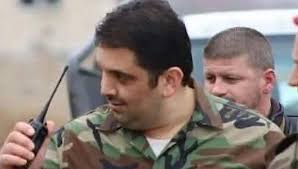In a press conference held Tuesday at the Ministry of Information in Damascus, Hassan Soufan, member of the High Committee for Civil Peace, and Interior Ministry spokesperson Nour Al-Din Al-Baba addressed the controversial release of several former regime officers. The briefing appeared aimed at clarifying the recent decision to release dozens of detainees arrested during the latest wave of violence in Latakia province.
Civil Peace First
Soufan confirmed that a number of former officers had recently been released, stressing that none had been found guilty of war crimes. He insisted that the committee’s actions were not a substitute for transitional justice but rather a parallel process designed to maintain social stability.
“These officers have been serving in the armed forces since 2021,” Soufan explained, “and they surrendered voluntarily either at the Iraqi border or in the al-Sukhna region under what is known as a ‘safe conduct’ arrangement.”
He added, “There can be no homeland without justice, no justice without fairness, and no fairness without the courage to speak the truth. We promise transparency and fairness to the victims.”
Soufan justified the release by invoking Islamic legal tradition: “Jurisprudence grants the state the authority to act based on the public interest. In a period of civil reconciliation, we are sometimes compelled to take bold decisions to prevent greater violence and to secure relative stability for the future.”
The Role of the Committee
Speaking about the High Committee for Civil Peace, Soufan described its mandate as complex: “Bridging the gap between national reconciliation and transitional justice is no easy task. It requires figures capable of engaging all sectors of society.”
He noted that the release of detainees falls within the committee’s jurisdiction, and affirmed that the state remains committed to pursuing individuals implicated in serious crimes. “Our role is to facilitate dialogue, draw conclusions, and present policy recommendations in coordination with state institutions,” he said.
Soufan also clarified, “Not everyone who carried a weapon can be imprisoned. Some were merely photographed with arms, without participating in bloodshed.”
Interior Ministry’s Position
For his part, Interior Ministry spokesperson Nour Al-Din Al-Baba accused “hostile foreign powers” of attempting to undermine Syria’s internal peace. He claimed that some 450,000 individuals had participated in combat alongside regime-aligned militias, and that 123,000 former Interior Ministry personnel had served during the Assad era—many of whom were implicated in crimes against the Syrian people.
Public Reactions and Legal Concerns
The press conference sparked mixed reactions. Prominent human rights lawyer Michel Shammas called for a transparent and principled approach to transitional justice. In a Facebook post, he argued that closing the chapter on Syria’s painful past must be done in a clear and just manner.
Shammas urged public trials for high-level offenders and demanded full truth disclosure so that victims could trust the process. “We need open hearings where perpetrators admit their crimes—where, how, and why they committed them—and apologize directly to the victims, in public and on national media,” he said. “Only then can victims and their families begin to heal and consider forgiveness.”
What Is the High Committee for Civil Peace?
President Ahmad al-Sharaa established the High Committee for Civil Peace by decree on March 9, 2025, appointing Dr. Anas Airot, Hassan Soufan, and Dr. Khaled Al-Ahmad to its leadership.
According to the presidential decree, the committee’s goal is to “preserve civil peace among Syria’s diverse communities in service of the national interest.” It is tasked with engaging directly with local populations, particularly in the coastal region, to support community security and stability while strengthening national unity during this sensitive transitional phase.
This article was translated and edited by The Syrian Observer. The Syrian Observer has not verified the content of this story. Responsibility for the information and views set out in this article lies entirely with the author.


